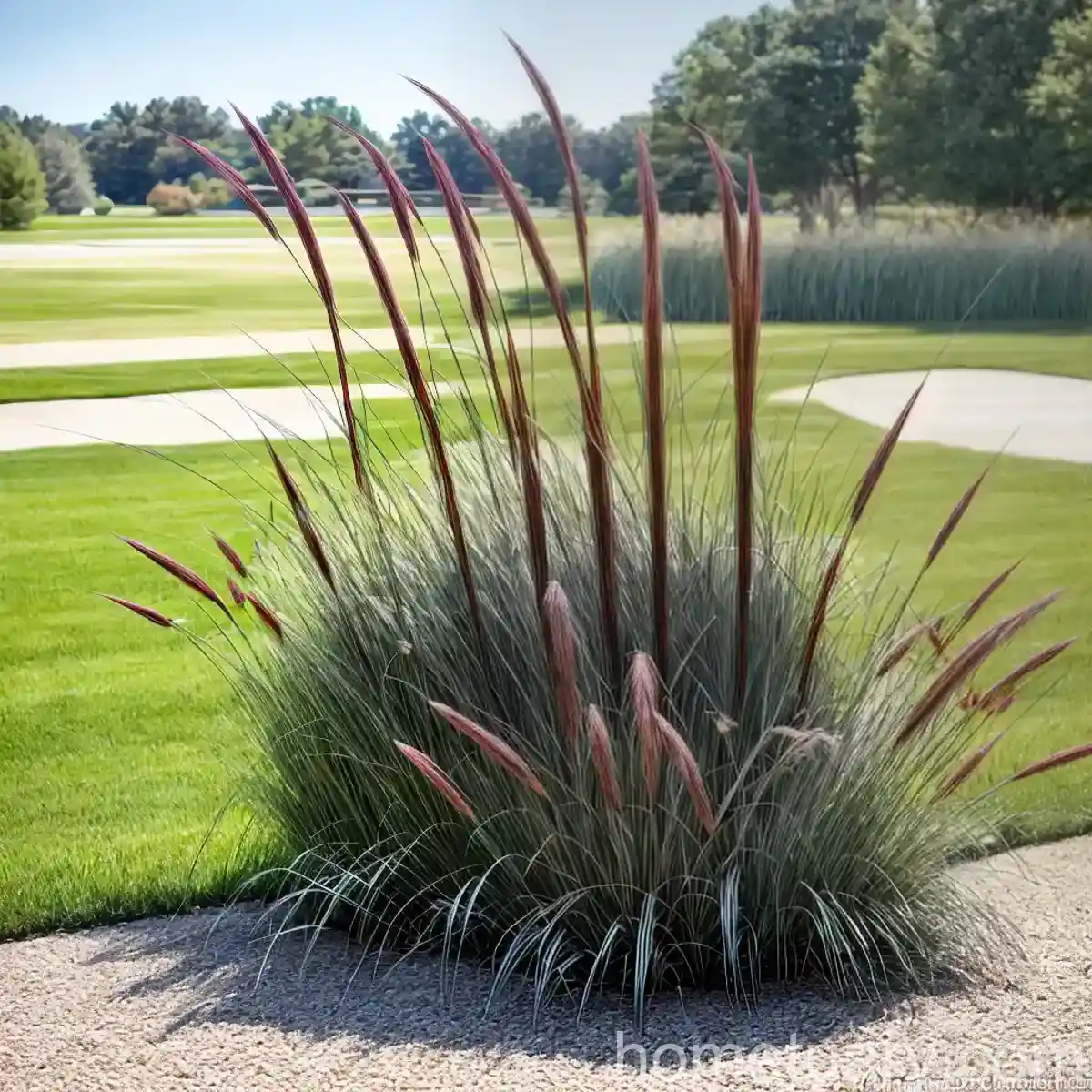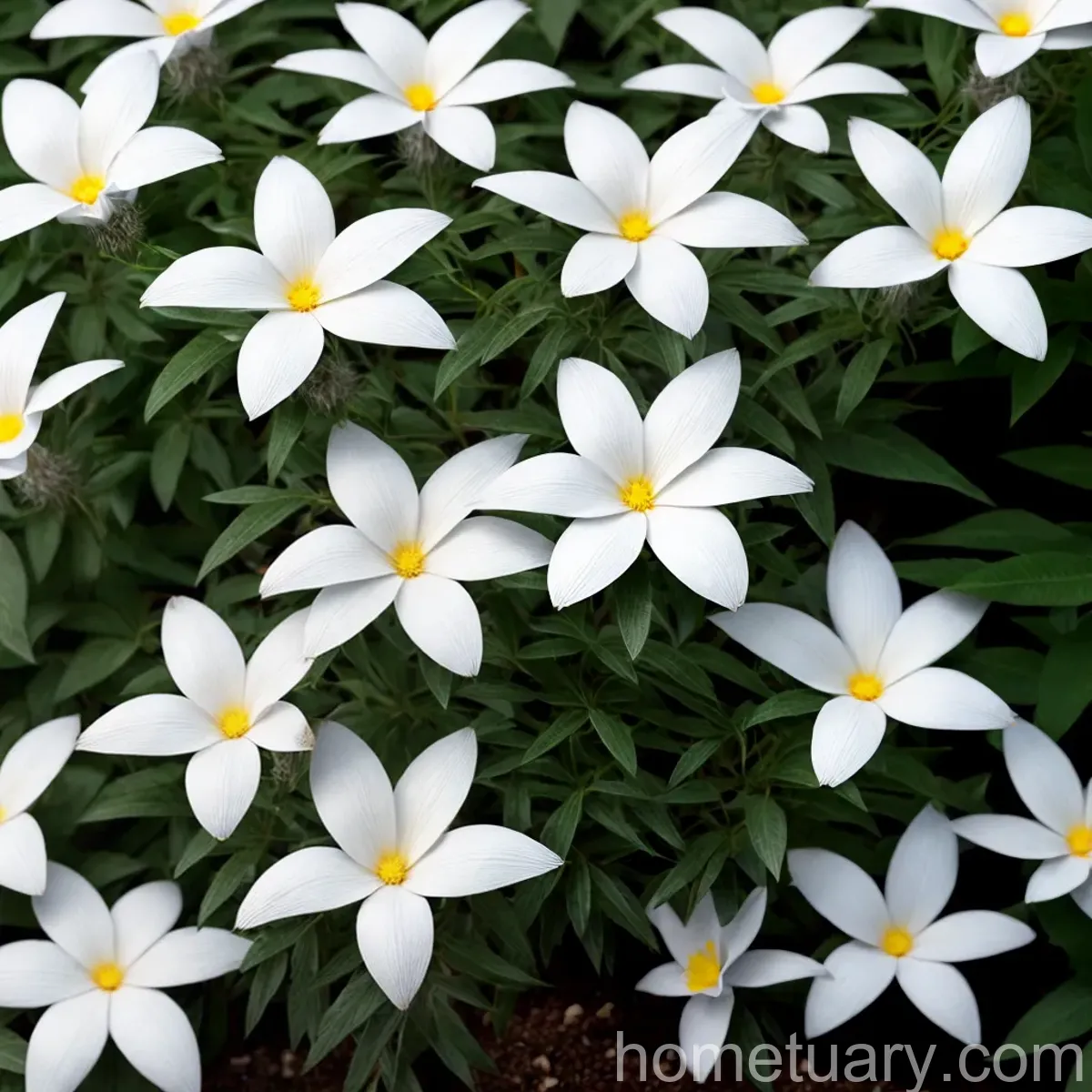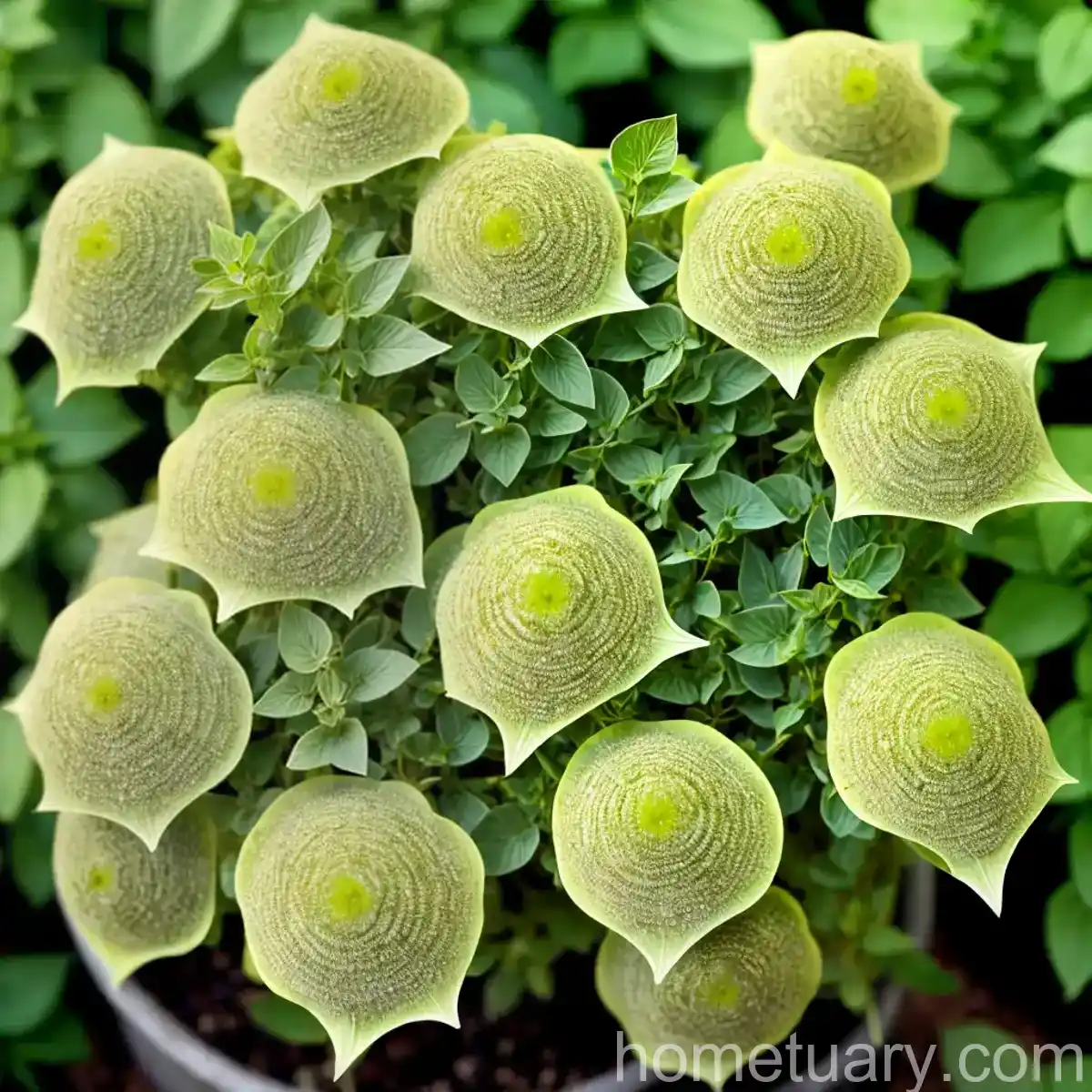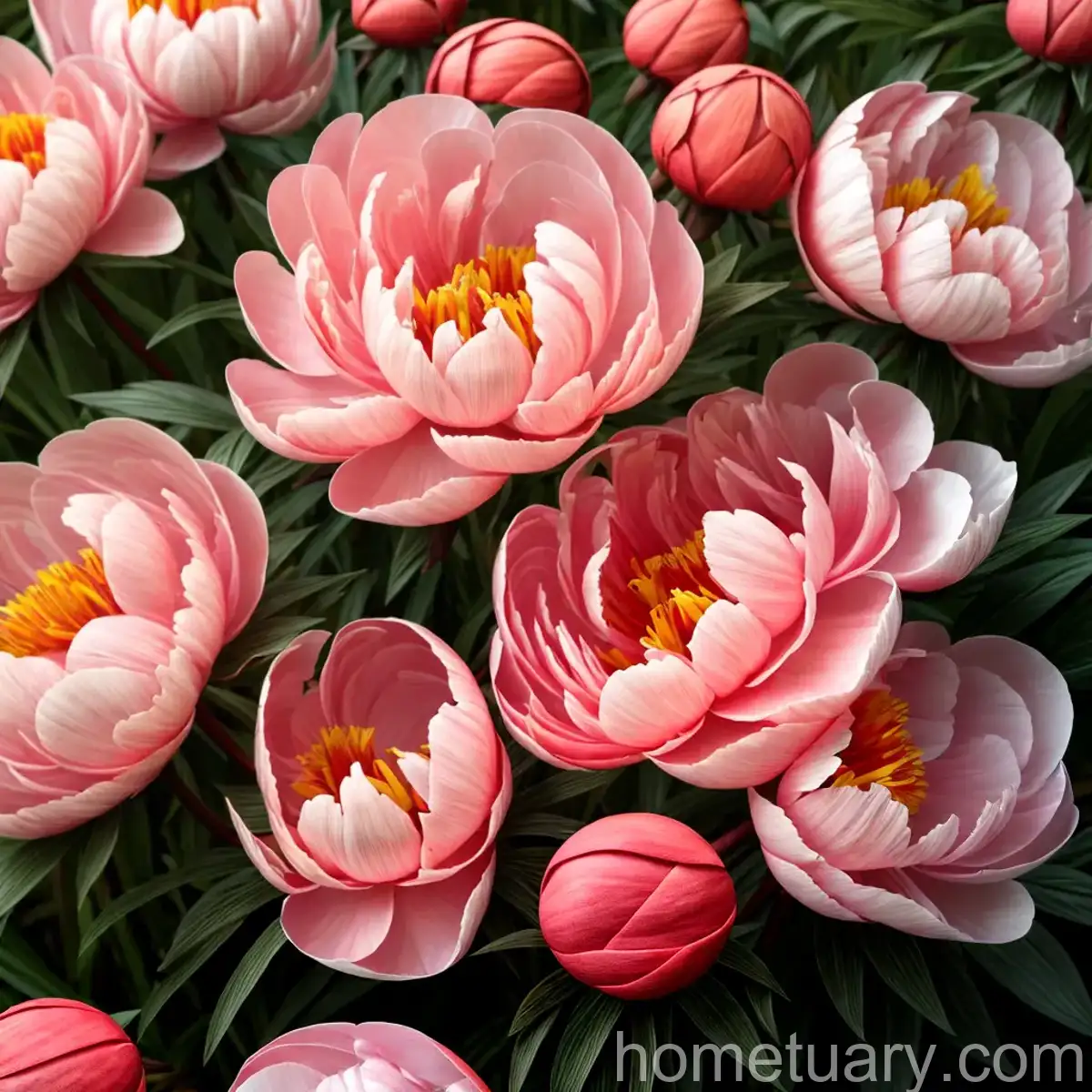Plant Profile: Iris (Iris pallida ‘Variegata’)
Iris pallida ‘Variegata’ is a stunning and versatile perennial plant that is highly valued for its striking foliage and delicate flowers. In this comprehensive guide, we will delve into the culture, uses, care, and maintenance of this beautiful plant. Whether you are a seasoned gardener or just starting your gardening journey, you will find valuable insights into incorporating iris pallida ‘Variegata’ into your garden landscape.
What is Iris pallida ‘Variegata’?
Iris pallida ‘Variegata’, commonly known as variegated iris or pale iris, is a herbaceous perennial plant that belongs to the Iridaceae family. It is a cultivar of the species Iris pallida, which is native to the Dalmatian coast of Croatia and other parts of southeastern Europe. This cultivar is cherished for its unique variegated foliage, which adds a touch of elegance to any garden setting.
The leaves of Iris pallida ‘Variegata’ are distinctly variegated with cream or yellow stripes, creating a visually striking appearance even when the plant is not in bloom. The flowers, which appear in late spring or early summer, are a beautiful pale lavender with intricate veining, adding to the plant’s allure. This iris cultivar typically reaches a height of 18-24 inches (45-60 cm) and spreads to form dense clumps over time.
Key Takeaways – Iris pallida ‘Variegata’
Let’s explore the key aspects of incorporating and caring for iris pallida ‘Variegata’ in your garden:
- Culture
- Uses
- Water
- Sunlight
- Fertilizer
- Soil
- Pruning
- Propagation
- Container Popularity
- Common Diseases
- Common Pests
- Botanist’s Tips
- Fun Facts
- Links to External Resources
Now, let’s delve into each of these aspects in detail to gain a deeper understanding of iris pallida ‘Variegata’ and how to best care for it in a garden setting.
Culture
Understanding the cultural requirements of iris pallida ‘Variegata’ is essential for ensuring its optimal growth and performance in the garden. Let’s explore the various cultural aspects involved in nurturing this exquisite plant.
Uses
Iris pallida ‘Variegata’ is a versatile plant that can serve multiple purposes in the garden. Its uses include:
- Ornamental Feature: The variegated foliage and delicate flowers make iris pallida ‘Variegata’ a captivating ornamental plant, adding visual interest to garden beds, borders, and containers.
- Cut Flowers: The lavender-hued blooms are suitable for cutting and can be used to create beautiful floral arrangements, adding a touch of elegance to indoor spaces.
- Pollinator Attractor: The nectar-rich flowers attract pollinators such as bees and butterflies, contributing to the overall biodiversity of the garden.
- Foliage Contrast: The variegated foliage of iris pallida ‘Variegata’ provides an attractive contrast when planted alongside other perennials and shrubs, enhancing the overall aesthetic appeal of the garden.
Water
Proper watering is crucial for the health and vitality of iris pallida ‘Variegata’. Here are some guidelines for watering this plant:
- Regular Moisture: Iris pallida ‘Variegata’ performs best in well-drained soil that is kept consistently moist, especially during the growing season. However, it is important to avoid waterlogged conditions, as excessive moisture can lead to root rot.
- Established Plants: Once established, iris pallida ‘Variegata’ exhibits good drought tolerance and can withstand brief periods of reduced water availability. However, providing regular moisture during extended dry spells will promote optimal growth and flowering.
Sunlight
Understanding the sunlight requirements of iris pallida ‘Variegata’ is essential for its overall health and performance. Here’s what you need to know about providing the right light conditions for this plant:
- Full Sun to Partial Shade: Iris pallida ‘Variegata’ thrives in locations that receive at least 6-8 hours of direct sunlight per day. However, it can also tolerate partial shade, particularly in regions with intense afternoon sun or during periods of high temperatures.
Fertilizer
Feeding iris pallida ‘Variegata’ with the appropriate nutrients can enhance its growth and flowering potential. Consider the following fertilizer recommendations for this plant:
- Balanced Fertilizer: Apply a balanced, slow-release fertilizer in early spring when new growth emerges. This will provide the necessary nutrients for healthy foliage and abundant flower production.
- Avoid Excessive Nitrogen: Refrain from using high-nitrogen fertilizers, as they may encourage lush foliage at the expense of flower production.
Soil
The type of soil in which iris pallida ‘Variegata’ is planted plays a significant role in its overall well-being. Consider the following soil requirements for this plant:
- Well-Drained Soil: Iris pallida ‘Variegata’ prefers moderately rich, well-drained soil with a slightly acidic to neutral pH. Amending heavy clay soils with organic matter such as compost or peat moss can improve drainage and soil structure.
- Avoid Waterlogged Conditions: Ensure that the planting site allows excess water to drain away, as standing water can lead to root rot and other moisture-related issues.
Pruning
Pruning contributes to the overall health, appearance, and longevity of iris pallida ‘Variegata’. Here are some essential pruning tips for maintaining this plant:
- Deadheading Spent Flowers: Remove faded or spent flowers to promote continuous blooming and prevent the formation of seed pods, which can redirect the plant’s energy away from new flower production.
- Spring Cleaning: In early spring, remove any dead or damaged foliage to maintain a tidy appearance and minimize the risk of disease development.
- Division: Every few years, consider dividing overcrowded clumps of iris pallida ‘Variegata’ to rejuvenate the plant and prevent overcrowding. This can be done in early spring or late summer after the blooming season.
Propagation
Propagating iris pallida ‘Variegata’ allows you to expand your plant collection and share its beauty with others. Consider the following propagation methods for this plant:
- Division: Divide mature clumps of iris pallida ‘Variegata’ in early spring or late summer, ensuring that each division has a portion of the rhizome and several healthy roots. Replant the divisions at the same depth as the original plant, and provide adequate water until new growth appears.
- Rhizome Cuttings: In late summer or early fall, select healthy rhizomes and cut them into sections, ensuring that each section contains at least one bud. Plant the rhizome cuttings in a prepared bed or container, and keep the soil consistently moist to promote root development.
Container Popularity
Iris pallida ‘Variegata’ is well-suited for container cultivation, allowing gardeners to enjoy its beauty in various settings, including patios, balconies, and small gardens. Consider the following tips for growing this plant in containers:
- Container Selection: Choose a spacious container with adequate drainage holes to accommodate the plant’s rhizomatous growth habit. A depth of at least 12 inches (30 cm) is recommended to provide ample room for root development.
- Well-Drained Potting Mix: Use a high-quality, well-draining potting mix formulated for perennial plants, ensuring that the container allows excess water to escape freely.
- Watering and Maintenance: Monitor the moisture levels in the container, ensuring that the soil remains consistently moist but not waterlogged. Provide regular fertilization during the growing season to support the plant’s nutrient needs.
Common Diseases
Like all plants, iris pallida ‘Variegata’ is susceptible to certain diseases, and recognizing the symptoms is crucial for effective management. Here are some common diseases that may affect this plant:
- Leaf Spot: Fungal leaf spot diseases can cause dark, water-soaked lesions on the foliage, leading to aesthetic damage and reduced plant vigor. Provide adequate air circulation and avoid overhead watering to minimize the risk of leaf spot diseases.
- Root Rot: Prolonged periods of waterlogging can lead to root rot, characterized by mushy, discolored roots and overall decline in plant health. Improving soil drainage and avoiding excessive irrigation can help prevent this issue.
- Bacterial Soft Rot: This bacterial disease can cause the rhizomes and other plant tissues to become soft, slimy, and foul-smelling. Ensuring proper sanitation practices and removing affected plant parts can help prevent the spread of bacterial soft rot.
Disease Diagnosis
Diagnosing and treating plant diseases require careful observation and appropriate intervention. Here are some tips for diagnosing and addressing diseases in iris pallida ‘Variegata’:
- Early Intervention: Regularly inspect the foliage, stems, and rhizomes of the plant for any signs of discoloration, lesions, or unusual growth patterns. Early detection allows for timely intervention and effective disease management.
- Correct Identification: If you suspect that your plant is affected by a disease, consult local horticultural resources or diagnostic laboratories to accurately identify the issue and receive tailored recommendations for treatment.
- Cultural Practices: Implementing cultural practices such as proper watering, adequate spacing, and sanitary measures can help prevent the onset and spread of diseases, promoting overall plant health.
Common Pests
Various pests may target iris pallida ‘Variegata’, potentially causing damage to the foliage, flowers, or rhizomes. Understanding the common pests and their management strategies is essential for preserving the plant’s vitality. Here are some pests to watch out for:
- Iris Borers: The larvae of iris borers tunnel into the rhizomes and can cause extensive damage. Regular inspection and prompt removal of affected rhizomes can help manage iris borer infestations.
- Aphids: These small, sap-sucking insects can congregate on the new growth of iris pallida ‘Variegata’, leading to distorted leaves and reduced vigor. Natural predators such as ladybugs and lacewings can assist in controlling aphid populations.
- Snails and Slugs: These mollusks are known to feed on the foliage of iris pallida ‘Variegata’, leaving behind characteristic slime trails and irregularly shaped holes. Employing physical barriers and organic molluscicides can help protect the plant from snail and slug damage.
Botanist’s Tips
As a botanist specializing in the cultivation of iris pallida ‘Variegata’, I have gathered valuable insights and tips to ensure the successful growth and care of this plant. Here are some expert recommendations for cultivating iris pallida ‘Variegata’:
- Mulching: Apply a layer of organic mulch, such as shredded bark or compost, around the base of the plant to conserve soil moisture, suppress weed growth, and regulate soil temperature.
- Companion Planting: Pair iris pallida ‘Variegata’ with complementary perennials and shrubs to create visually appealing combinations. Plants with contrasting foliage colors and textures can enhance the overall landscape design.
- Seasonal Care: Monitor the plant throughout the growing season, adjusting watering and fertilization practices based on the prevailing weather conditions and the plant’s growth stage.
Fun Facts
In addition to its ornamental value, iris pallida ‘Variegata’ boasts several intriguing and appealing characteristics. Here are some fun facts about this captivating plant:
- Historical Significance: Varieties of Iris pallida have been cultivated for centuries and are revered for their historical symbolism and traditional uses in perfumery and herbal medicine.
- Fragrance: Some selections of iris pallida ‘Variegata’ exhibit a delicate and sweet fragrance, adding an additional sensory dimension to their allure.
- Symbolism: Irises, including the variegated iris, have been associated with various symbolic meanings, including wisdom, faith, and valor, making them a popular choice for artistic and literary representations.
Links to External Resources
Further Reading and Resources
For more in-depth information and practical guidance on growing and caring for iris pallida ‘Variegata’, consider exploring the following resources:
- American Iris Society: https://www.irises.org/
- Royal Horticultural Society: https://www.rhs.org.uk/
- University Extension Websites: Many state university extension services offer research-based information on gardening, plant care, and pest management specific to your region. Search for your local university extension website to access valuable resources.
In conclusion, iris pallida ‘Variegata’ presents a captivating opportunity for gardeners to incorporate a plant with distinct foliage and delicate blooms into their landscapes. By understanding its cultural requirements, appropriate uses, and potential challenges, gardeners can effectively cultivate and showcase the unique beauty of this stunning perennial.
I hope this comprehensive guide has provided you with valuable insights and inspiration for incorporating iris pallida ‘Variegata’ into your garden and enjoying the many rewards it has to offer. Happy gardening!
This blog post is a reliable and comprehensive resource on the cultivation and care of iris pallida ‘Variegata’, enriched with practical tips, essential guidelines, and engaging insights. Whether you’re an experienced gardener or a novice enthusiast, this guide equips you with the knowledge and confidence to nurture this exquisite plant effectively.















